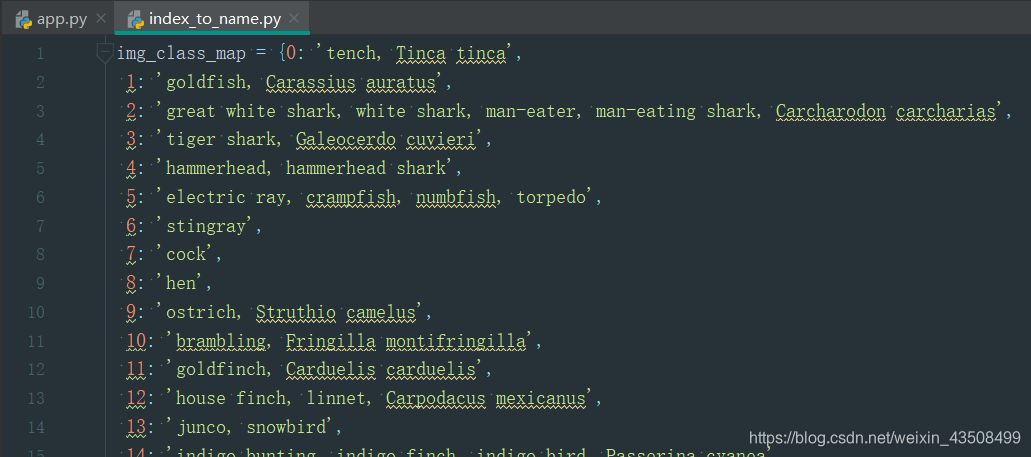Flask部署深度学习模型的一个例子
一. Flask
工程一共包括三个文件:

-
用于测试的图片1.jpg

-
index_to_name.py定义了一个字典,键是预测类label,值是对应的class_name,如下图所示:

-
主要代码文件app.py
from index_to_name import img_class_map
import torchvision.models as models
import torchvision.transforms as transforms
from PIL import Image
from flask import Flask, jsonify, request
app = Flask(__name__)
model = models.resnet50(pretrained=True) # Trained on 1000 classes from ImageNet
model.eval() # Turns off autograd and
# Transform input into the form our model expects
def transform_image(infile):
input_transforms = [transforms.Resize(255), # We use multiple TorchVision transforms to ready the image
transforms.CenterCrop(224),
transforms.ToTensor(),
transforms.Normalize([0.485, 0.456, 0.406], # Standard normalization for ImageNet model input
[0.229, 0.224, 0.225])]
my_transforms = transforms.Compose(input_transforms)
image = Image.open(infile) # Open the image file
timg = my_transforms(image) # Transform PIL image to appropriately-shaped PyTorch tensor
timg.unsqueeze_(0) # PyTorch models expect batched input; create a batch of 1
return timg
# Get a prediction
def get_prediction(input_tensor):
outputs = model.forward(input_tensor) # Get likelihoods for all ImageNet classes
_, y_hat = outputs.max(1) # Extract the most likely class
prediction = y_hat.item() # Extract the int value from the PyTorch tensor
return prediction
# Make the prediction human-readable
def render_prediction(prediction_idx):
class_name = img_class_map[prediction_idx]
return prediction_idx, class_name
@app.route('/')
def index():
return 'server is ok'
@app.route('/predict', methods=['POST'])
def predict():
if request.method == 'POST':
# 也可以采用上传文件的方式
# file = request.files.get('file')
file = request.json['file']
if file is not None:
input_tensor = transform_image(file)
prediction_idx = get_prediction(input_tensor)
class_id, class_name = render_prediction(prediction_idx)
return jsonify({
'class_id': class_id, 'class_name': class_name})
if __name__ == '__main__':
app.run()
在命令行启动服务:
python app.py
二. postman工具
利用postman用来测试接口。
传入图片的路径,格式为json,如下图所示:

结束。